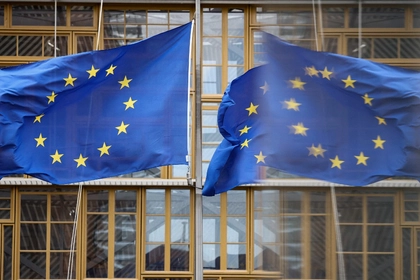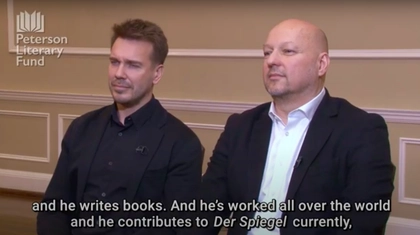This fall, Americans will choose an internationalist or an isolationist to become their President. But the future of Europe, the outcome of the war in Ukraine, the global economy, and current world order are also on the ballot.
If Trump the isolationist is elected, he may withdraw or dramatically reduce contributions to NATO which would force Europe to quickly build a bigger military force and finance Ukraine indefinitely in its struggle to fend off Russia’s westward march.
JOIN US ON TELEGRAM
Follow our coverage of the war on the @Kyivpost_official.
America’s isolationism ended in the 20th century when Washington volunteered to save Europe twice. After 1945, America helped the continent transform itself from a sea of rubble and a perennial slaughterhouse into dozens of prosperous and peaceful democracies. The European Union (EU) and NATO were created.
But today, Americans are weary of global policing. There’s no end in sight for the Ukrainian war and the EU’s 27 members could be left holding the bag for all of it. Faced with this possibility, European financial markets fall while the US dollar and gold prices increase.
There is also political hand-wringing across the continent, but Netherlands Prime Minister Mark Rutte recently chided Europe’s leaders about their complaints: “We should stop moaning and whining and nagging about Trump. Let’s stop doing that. It’s up to the Americans. I’m not an American, I cannot vote in the US. We have to work with whoever is on the dance floor.”

Ukrainian Naivety is Both Good and Bad
Kiel Institute. Military, financial, humanitarian aid combined.
Fortunately for Europeans, their nations are wealthy and collectively have a GDP ten times larger than Russia’s.
And Ukraine can continue to wage war into 2025 and beyond, given billions from Europe, the $61 billion it’s received from the US Congress, and the $50 billion in interest payments from frozen Russian assets granted by the G7.
But sustained support will be needed to replenish munitions and weapons and Europeans are preparing. The resilient Mark Rutte was recently made Secretary-General of NATO’s 32 members, Europe’s de facto “national armed force.”
His mandate is to push for more defense spending and ammunition production in Europe. And the EU just named, as its foreign policy head, a Russia hawk, former Estonian Prime Minister Kaja Kallas.
She explained how the two organizations will work together: “In terms of a military crisis, it is important who gives orders to whom and how the chain of command really works. That is NATO, militarily. But boosting the defense industry is where the European Union also has a say.”
Rutte is a dealmaker and Kallas, a driven politician, but also in the mix is Viktor Orban, the pro-Russia Prime Minister of Hungary, who just assumed the Presidency of the EU for six months, a rotational position.
He’s upset many by obstructing and delaying key decisions in both the EU and NATO over the years, to benefit Russia, and was condemned for recently meeting with Putin, China’s Xi, and Donald Trump as a self-appointed peacemaker. But he appears to have completed an end-run around Europe with Donald Trump’s help. Orban returned from his tour and warned Europeans: Prepare for a pivot in US policy to Asia, and push for negotiations with Russia or provide more funds to continue Ukraine’s defense.
Ukraine’s response to all this uncertainty and angst has been pitch-perfect.
“I think that if Donald Trump becomes president, we will work together. I’m not worried about this,” said Ukraine’s President Volodymyr Zelensky. Then on July 15, he announced Ukraine would present a “plan” for a “just peace” at talks scheduled for November – the same month as the US Presidential election.
The significance of this cannot be understated: It is the first time that Zelensky has agreed to hold direct negotiations with Moscow without imposing the precondition that Russian troops leave Ukrainian territory.
But success is far from guaranteed. For starters, Putin wants his frozen assets back and no NATO or EU membership for Ukraine, both deal breakers.
Kyiv wants its territories back, security guarantees equivalent to NATO membership, and independent peacekeepers permanently stationed in disputed territories.
Other impediments to a solution are that Putin’s word is worthless and Europe has yet to get its act together.
Either its nation-states coalesce and collaborate militarily, a tall order given their bloody history of conflicts, or they will eventually be divided and conquered.
“Our Europe today is mortal. It can die,” warned French President Emmanuel Macron in February.
He wants Europe to mobilize quickly and consider sending troops to Ukraine – a notion that caught the French by surprise and contributed to his recent electoral setback. But that was not an outlier reaction. When polled recently, most Europeans say they won’t fight for their country or for Europe.
Only the “Baltic 7” have conscription
Manpower totals in 11 NATO forces as of 2024. Ukraine has 1 million more. Russia slightly more than Ukraine. Statistica.
European public opinion as to what Europe should do is all over the map. Opinions on a few issues are coalescing, but not in the right direction for Ukraine’s cause.
In May, the European Council of Foreign Relations (ECFR) think tank polled citizens in 15 European nations and results were that a majority of people believe that a negotiated outcome with Russia, not outright Ukrainian military victory, is most likely.
There was also strong support for Ukraine’s cause. Most regarded arming Ukraine as necessary to strengthen its hand in future negotiations with Russia, but didn’t believe this could achieve a battlefield victory.
And polls conducted inside Ukraine found that 58 percent foresee a Ukrainian victory, 30 percent said it would end in a settlement, and only 1 percent expected Russia to win. Not surprisingly, the vast majority of Ukrainians said abandoning sovereignty by agreeing to remain outside NATO and the EU was totally unacceptable.
Likewise, a cease-fire without UN or NATO peacekeepers, or soldiers from some “neutral” country such as Saudi Arabia, would be unacceptable because Russia would simply breach the borders, as it has in 2014 and in 2022.
Individual nations differ widely. Italy was the least supportive of Ukraine, but a large portion of people in Estonia believed Ukraine would win the war outright. Most Swedes and Poles want Europe to help Ukraine fight and get back all its territory, but majorities in Greece and Bulgaria opposed this.
Overall, most countries favor giving Ukraine more weapons, even if only to improve Ukraine’s negotiating hand. But there was no agreement among Czechs, French, Germans, Dutch, Spanish, and Swiss as to the EU’s future role.
None supported sending troops to Ukraine and only 32 percent of Europeans responded that they would be willing to fight for the EU, with a mere 14 percent of Italians willing to fight for Italy. Also significant is that only countries nearest Russia, surrounding the Baltic Sea, mandate military conscription – Sweden, Denmark, the three Baltics, Finland, and Norway.
Hal Brands, a professor of global affairs at the Johns Hopkins School of Advanced International Studies, wrote about the downsides facing Europe in Foreign Policy: “Defense spending [to compensate for America’s departure] would have to rise two- or threefold in many countries. European states would invest heavily in the world’s deadliest weapons – missiles, attack aircraft, and sophisticated power projection capabilities. With the loss of the US nuclear umbrella, frontline states hoping to deter Russia – above all, Poland – could even seek their own nuclear weapons,” adding that the world could end up with “a weak and divided post-American Europe – a continent whose countries aren’t at one another’s throats but don’t have one another’s backs.”
Despite looming negatives, Europe must “stand on its own feet,” but America cannot simply pull the plug without causing serious political and economic difficulties to most important allies, trading partners, and their democracies.
Withdrawal, based on the myth that Russia is not an existential threat to Europe and the world economy, is irrational.
Putin invaded without provocation or justification, he won’t volunteer to stop, and he intends to invade EU and NATO countries next.
He’s causing trouble in the Middle East. If America reneges on its commitments, it will be tested by China and others.
And worse, Ukraine may continue anyway, Putin will double down, and 10 million Ukrainian refugees will end up pouring into Europe, causing political and financial chaos.
This is why Europe’s NATO members must pledge to invest heavily in defense and security industries — a strategy attacked by Russia which embarked on a plan to assassinate defense industry executives across Europe. The scheme was just interdicted by German and American operatives. This constituted an attack on NATO itself.
Pushing the continent to become militarily self-sufficient is Poland, now becoming a serious military power, along with Macron, Eastern Europeans, the British, and Scandinavians who fully back Ukraine.
So are America’s defense contractors who are creating joint venture partnerships and have been landing weapons and ammunition contracts there since 2022.
But at the end of the day, the American voters will decide and it’s interesting to note that morality and decency are also on the November ballot.
In April, a Gallup poll revealed that 55 percent of Americans believe America should do more to support Ukraine because it’s cause is just and because Russia is a threat to the world.
The views expressed in this opinion article are the author’s and not necessarily those of Kyiv Post.
You can also highlight the text and press Ctrl + Enter










